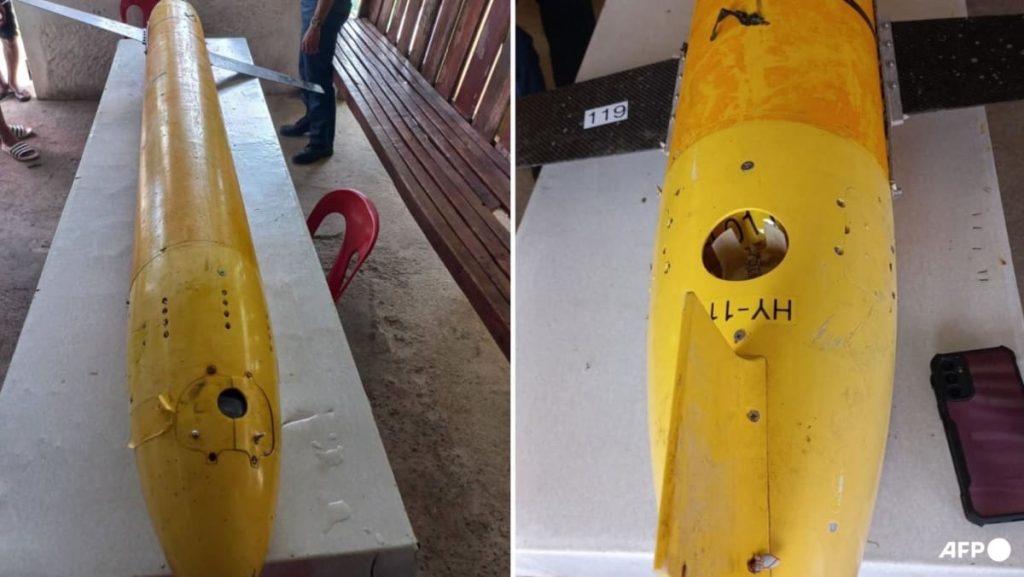The discovery of a suspected Chinese submarine drone in Philippine waters has ignited concerns about national security and further complicated the already tense relationship between the two nations over maritime disputes in the South China Sea. The unmanned underwater vehicle (UUV), identified as a possible “HY-119” model, was found by fishermen near Masbate province, approximately 9 kilometers off the coast. This incident underscores the ongoing struggle for control and influence in the strategically vital region, where China’s expansive claims clash with those of the Philippines and other neighboring countries.
The recovered drone, approximately 2 meters in length and torpedo-shaped with fins, features an antenna and an “eye” suggestive of reconnaissance capabilities. While unarmed, its presence raises serious questions about China’s intentions and its potential surveillance activities within the Philippines’ Exclusive Economic Zone (EEZ). The marking “HY-119” links the drone to a Chinese underwater navigation and communication system, further solidifying suspicions of its origin and purpose. This discovery comes at a time of heightened tensions in the South China Sea, where China’s assertive actions, including island-building and military deployments, have increasingly alarmed regional players and the international community.
The South China Sea, a crucial waterway for global trade and rich in natural resources, has been the epicenter of a long-standing territorial dispute involving China, the Philippines, Vietnam, Malaysia, Brunei, and Taiwan. China’s claim to nearly the entire sea, based on its historical “nine-dash line,” has been challenged by other claimants and ultimately invalidated by an international tribunal ruling in 2016. However, China has consistently rejected the ruling and continued to assert its dominance in the region, leading to frequent confrontations and diplomatic standoffs.
The Philippines, while pursuing closer economic ties with China, has also sought to defend its sovereign rights in the face of Chinese pressure. The presence of the suspected Chinese drone within Philippine waters represents a potential violation of these rights and underscores the complexities of managing the bilateral relationship. The incident also highlights the growing use of advanced technologies, such as unmanned underwater vehicles, in maritime surveillance and intelligence gathering, adding another layer to the challenges of maintaining regional stability and security.
The recovery of the drone by Filipino fishermen and its subsequent handover to the Philippine Navy demonstrates the increasing awareness and vigilance of local communities in safeguarding their maritime domain. The fishermen’s prompt action in reporting the discovery prevented the potential loss of valuable intelligence and allowed authorities to investigate the matter further. This incident emphasizes the importance of engaging local communities in maritime security efforts and fostering cooperation between civilian and military actors.
The incident also brings into focus the critical need for clear communication and established protocols between nations to address such occurrences. The lack of immediate response from both the Chinese embassy in Manila and the Philippine Navy highlights the need for enhanced communication channels to prevent escalation and misunderstandings. A thorough investigation, coupled with transparent dialogue between the concerned parties, is essential to establish the facts, address the underlying issues, and prevent similar incidents in the future. The discovery serves as a reminder of the delicate balance required to navigate the complex geopolitical landscape of the South China Sea and the importance of upholding international law and promoting peaceful resolution of disputes.

